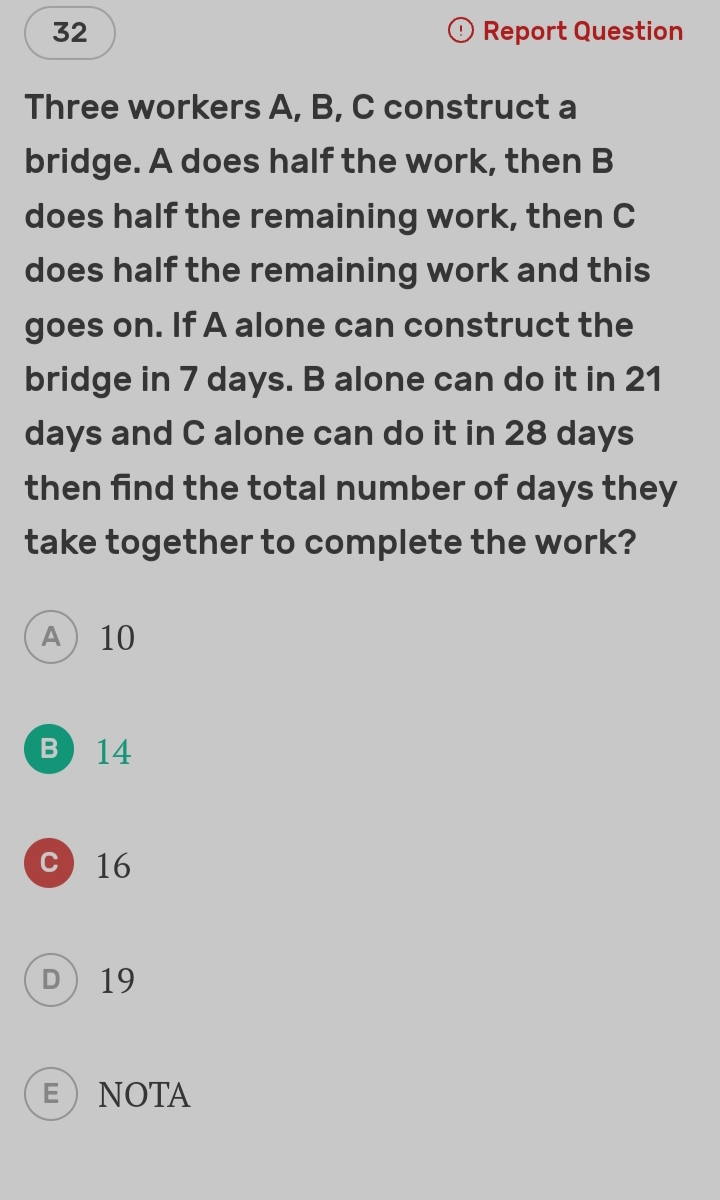Started 3 weeks ago by Hardik Kacha in
3 Replies
-
Replied 9 months ago
Taking the lcm of all the times, we get lcm(7,21,28) = 7 * 12 = 84, which can be taken as total work W.So, the efficiencies can be given by,eA = 84/7 = 12 units/day; eB = 4 units/day; eC = 3 units/dayNow, the working pattern is: A does half the work i.e. 42 units, then B does 1/4th of the total work i.e. 21 units, then C does 10.5 units, then A again does 5.25 units, then B does 2.625 units, then C does 1.3125 units, and so on...So, an infinite GP will form here as follows:Total time = time taken by A + time taken by B + time taken by C = {(42 + 42/8 + 42/64 + ...)/12} + {(21 + 21/8 + 21/64 + ...)/4} + {(21/2 + 21/16 + 21/128 + ...)/3} = 42/12 * (1 / (1 - 1/8)) + 21/4 * (1 / (1 - 1/8)) + 21/6 * (1 / (1 - 1/8)) = (7/2 + 21/4 + 7/2) * 8/7 = 49/4 * 8/7 = 14 days
Replied 3 weeks ago
I am not able to understand this question. Its a humble request that if anyone solves it please don't use the method of assuming the work done as 1. IMG_20241020_060637.jpg 130.77 KB

